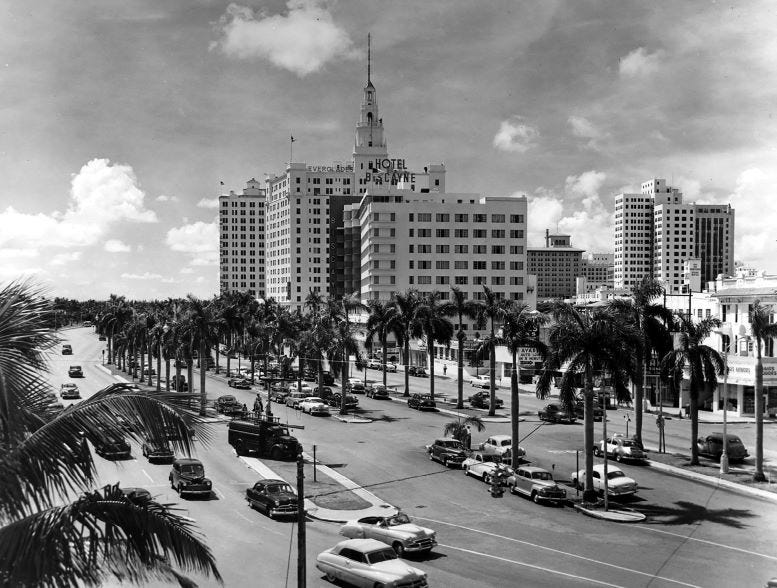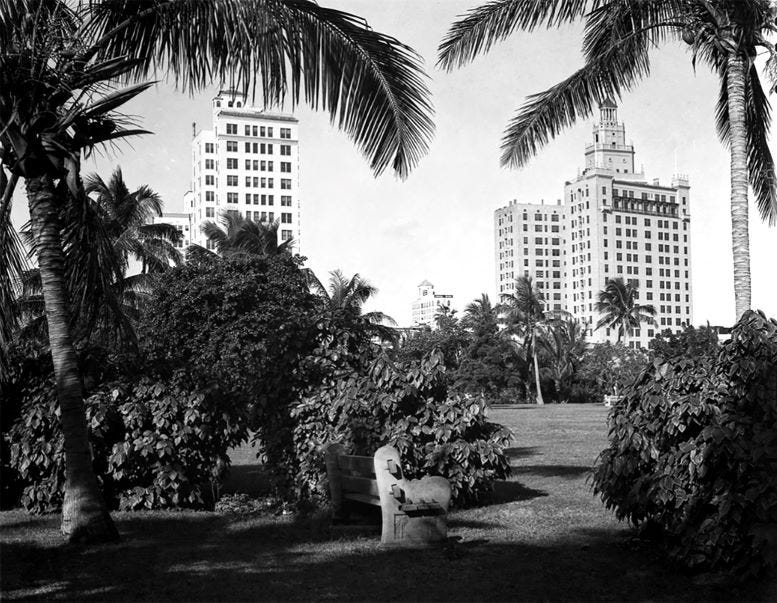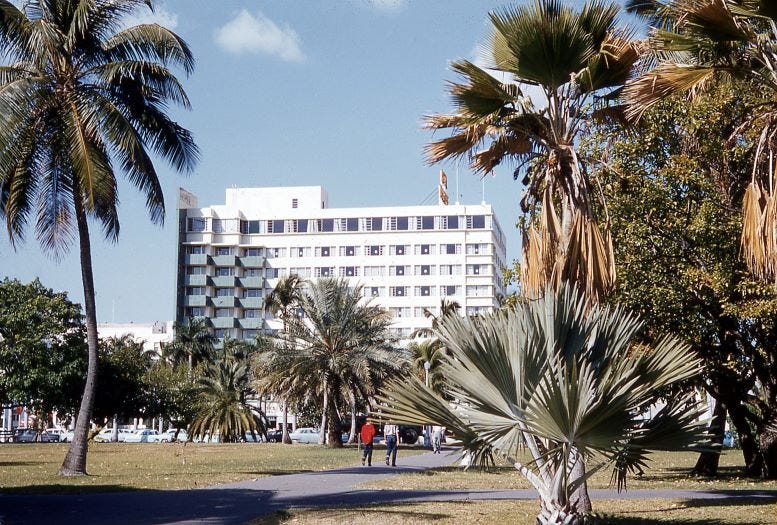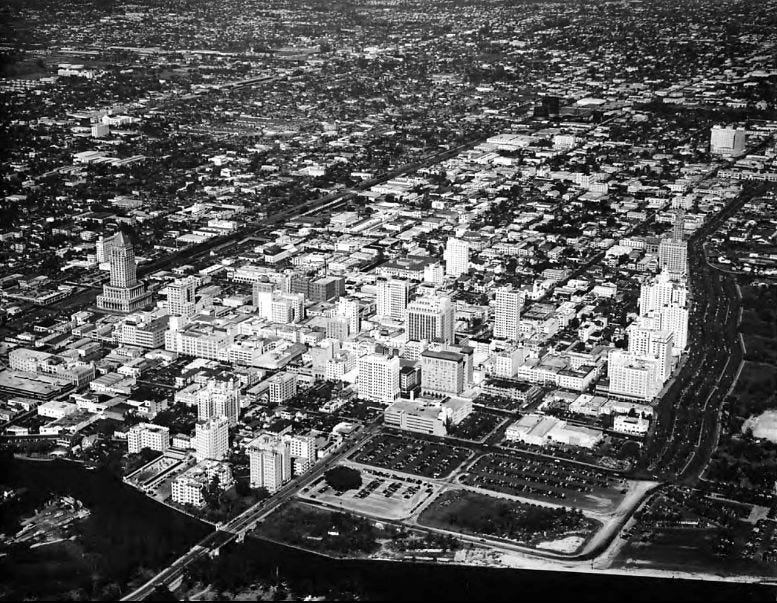Biscayne Boulevard in 1955
The cover photograph is a picture of Biscayne Boulevard looking south from NE Fifth Street in downtown Miami.

This mid-century vista along Biscayne Boulevard features buildings that dotted the Miami skyline from a variety of eras. The Biscayne Hotel, at NE Fourth Street and Biscayne Boulevard, was designed by architect Albert Anis, and his associate, Melvin Grossman, and opened in March of 1951. The hotel still stands today at 340 Biscayne Boulevard and operates as a Holiday Inn.
In an article published in the Miami News on February 4, 1951, a month before the inn opened, the notable features of the building were described:
“Among the special attractions of the Biscayne Terrace are the marble lobby, glass entrance to the dining room, the cocktail lounge, and the Starlight ballroom on the roof, which is equipped with indirect lighting.”
Directly south of the Biscayne Terrace Hotel was the Everglades Hotel, at 244 Biscayne Boulevard, which was constructed by Fred F. French and originally opened as an apartment building in January of 1926. It was later converted into a hotel and was a prominent structure in Miami’s skyline until 2004 when it was razed and replaced with the Vizcayne Condominium Towers at the same address.
Peaking out directly south of the Everglades Hotel was the Miami Colonial Hotel. Originally constructed as the Watson Hotel in 1924, it was renamed in September of 1930 after the building was acquired by a Pittsburgh-based investment firm. That organization also owned and operated the William Penn and Venetian Hotels of Miami Beach, the Henrietta Towers on SE Second Avenue in downtown Miami, which became the Colonial Towers after the acquisition of the building, also in 1930.

The Miami Colonial Hotel still stands and operates as YVE Hotel and is, along with the former Biscayne Terrace, one of the last standing historic hotels along the stretch of Biscayne Boulevard once known as hotel row. The YVE Hotel property was acquired during the current building boom by a New York-based firm and is slated to be replaced in the near future.
Behind, or to the west of the structures described above are the Ingraham (1927), Huntington (1926), Congress (1926), and Alfred I Dupont buildings. All but the last building in the list are remnants of the building boom of the 1920s, whereas the Alfred I Dupont is a product of the late-1930s. During the onset of the United States entrance into World War II in December of 1941, the Dupont building was commissioned by the United States Navy as the headquarters for their Southern Command. It was nicknamed U.S.S. Neversink given its role in planning for the training and deployment of the Navy’s fleet, but that it would never see battle on the open seas.
The revelation of the photograph was the light traffic along the boulevard during the time of the photograph. Biscayne Boulevard was widened in 1926 and provided free flow of traffic along Miami’s north to south thoroughfare. As is configured today, the median of the boulevard was used to provide parking for guests and residents who may have travelled downtown to enjoy dining, shopping, or a relaxing day at Bayfront Park.
Resources:
Miami News: “Biscayne Terrace Hotel to Open During March”, February 4, 1955.
Article: “Miami Colonial Hotel”






